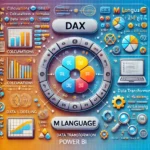In the fast-paced and ever-evolving world of software development and project management, Agile and Scrum have emerged as two popular methodologies that promote flexibility, collaboration, and iterative progress. While both approaches share similar principles, they are distinct in their implementation and can lead to different outcomes for projects. In this blog post, we will delve into the nuances of Agile vs. Scrum, examining their characteristics, benefits, and use cases to help you determine which methodology suits your team’s needs best.
Agile Methodology: The Foundation of Collaboration
Agile is a broad set of principles and values that prioritize customer collaboration, frequent delivery of valuable software, and the ability to respond to changing requirements. It emphasizes flexibility, adaptability, and customer satisfaction through continuous feedback loops. Agile promotes self-organizing teams, empowering each member to contribute their expertise and creativity to the project.
Key Principles of Agile
- Customer collaboration over contract negotiation
- Responding to change over following a plan
- Delivering working software frequently
- Valuing individuals and interactions over processes and tools
https://synapsefabric.com/2023/07/22/agile-vs-waterfall-choosing-the-right-project-management-approach/
Use Cases for Agile
- Projects with evolving requirements and frequent changes.
- Collaborative environments where team members can actively participate in decision-making.
- Industries that demand quick responses to market changes and customer demands.
Scrum: The Agile Framework for Team Productivity
Scrum is a specific implementation of the Agile principles. It is a lightweight, iterative, and incremental framework that enables teams to divide complex projects into smaller, manageable tasks called “sprints.” Sprints usually last two to four weeks, during which teams commit to completing a set of prioritized tasks. Scrum includes defined roles (Product Owner, Scrum Master, and Development Team) and ceremonies (Sprint Planning, Daily Standup, Sprint Review, and Sprint Retrospective) that foster transparency and continuous improvement.
Key Elements of Scrum
- Sprints: Fixed-length iterations for product development.
- Product Backlog: A prioritized list of tasks to be completed.
- Sprint Planning: A meeting to determine the work to be done in the upcoming sprint.
- Daily Standup: A brief daily meeting for team synchronization.
- Sprint Review: A demonstration of completed work to stakeholders.
- Sprint Retrospective: A reflection on the sprint to improve future performance.
Use Cases for Scrum
- Projects with well-defined objectives and requirements.
- Development teams seeking increased productivity through defined roles and ceremonies.
- Products that require regular iterations and frequent releases to the market.
Agile vs. Scrum: The Key Differences
Agile vs. Scrum Flexibility
- Agile: Emphasizes adaptability to change at any stage of the project.
- Scrum: While Agile promotes flexibility, Scrum’s sprint structure adds some rigidity to allow for better planning and commitment within each iteration.
https://synapsefabric.com/2023/07/24/agile-vs-sdlc-embracing-flexibility-or-embracing-structure/
Roles and Ceremonies
- Agile: Provides guiding principles without prescribing specific roles and ceremonies.
- Scrum: Defines roles and ceremonies to streamline project management and team collaboration.
Project Scope
- Agile: Suitable for projects with uncertain or frequently changing requirements.
- Scrum: Best suited for projects with a well-defined scope and stable requirements.
Agile and Scrum are two powerful methodologies that share the common goal of promoting iterative progress, customer collaboration, and continuous improvement. Agile’s flexible and adaptive principles allow for seamless integration into various project environments, making it a valuable mindset for any team. On the other hand, Scrum provides a more structured approach with clearly defined roles and ceremonies, making it an excellent choice for teams seeking better organization and productivity.
Ultimately, the choice between Agile and Scrum depends on the nature of the project, the team’s preferences, and the level of structure required. By understanding the nuances of these methodologies, teams can make informed decisions to drive successful projects and deliver high-quality products to satisfied customers.






